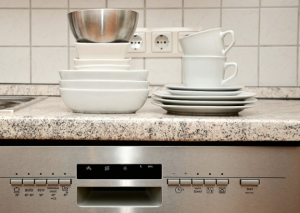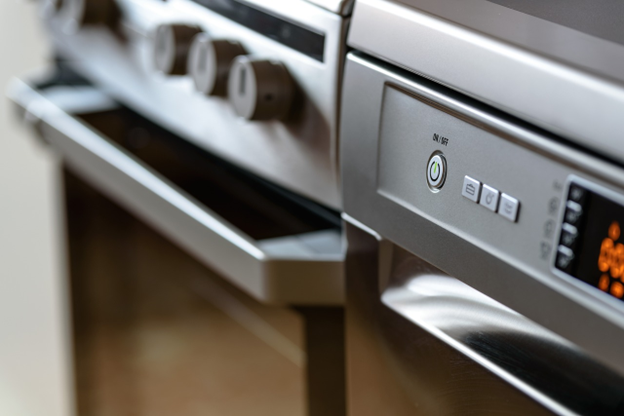Dishwashers are part of the kitchen equipment that makes our work easier and faster than washing the dishes by hand. But like any other appliance, dishwashers do have a lifespan that is expected to be followed. Knowing when you need to get a new dishwasher is very important in order to avoid the inconveniences of frequent repairs. Below are some of the signs that may help you determine that it is high time you conducted a new installation.
Persistent Performance Issues
If a dishwasher is not washing dishes to the required standard then it could indicate that there is an issue. If you discover that the dishes are still not clean or are blotchy after washing and rinsing it for a full cycle, then it will mean that the appliance is not cleaning properly.
Generally, there may be poor performance as represented by puddles that are left at the bottom of the machine after a washing cycle, or strange, loud noises produced by the washing machine. Occasionally, they can be solved with small fixes for example, washing the spray arms or replacing the filters. Nevertheless, if these problems persist even with the assistance of a professional, it will be more reasonable and financially beneficial to purchase a new machine.
Rising Repair Costs
According to this link, if you are continually having to ask for the services of a technician to fix problems with your machine then replacement is a better option. Such costs can soon accumulate, and since some of these repairs are routine, the instant the cumulative cost of the repairs starts nearing or equaling the cost of a brand new unit, it becomes economically wiser to buy a new one.
Some of them may include having to rework on the broken racks, replacing worn out seals or even having to carry out pump repairs. Although single repair works may appear to be cheap they may be very expensive if the cost of each one of them is considered.
Moreover, older models are easily damaged or difficult to repair due to unavailability, or due to the unavailability of the spare parts, the repair costs are additionally charged. A new machine not only does away with the requirement of a frequent repair, but it also comes with a warranty that can give the buyer a shield against any problem.

Frequent Breakdowns and Age of the Appliance
Dishwasher’s age is a vital factor when considering if the item needs replacement. In general, dishwashers are expected to last for a few years and the average duration that most of them can last is between 9 to 12 years. In the course of time, they lose efficiency and more often fail, or have breakdowns as the children reach this age. It is even advisable to attend to what may seem as petty problems regularly as this is a clear sign that the appliance is soon going to give up.
Parts get rusty and other parts may get damaged, and the overall efficiency of the machine decreases. Purchasing a new dishwasher can help you have a better reliable appliance along with other new features that would make your kitchen a better place. If your dishwasher is old and you are faced with repeated failure, then it makes sense to compare the possibilities of purchasing a new dishwasher.
As for the issues concerning the choice of a new model of a dishwasher, it is necessary to take several aspects into account. First of all, it is essential to pay attention to the age of your current dishwasher since it heavily influences the decision. Of course, any appliance, including dishwashers, has a useful life span.
On average, the life expectancy of a dishwasher is 7 to 10 years on average (source: https://worldmetrics.org/average-lifespan-of-a-dishwasher/). When your dishwasher is getting to this age or is already beyond it, it might start working worse and require more repairs more often. Problems related to a car’s reliability, and especially increasing repair costs, indicate the need for a change.
Secondly, one should consider the energy efficiency of the dishwasher that he or she is going to purchase. Some dishwasher brands therefore consume more power than others, more so those that are older models and have not been upgraded to the more efficient models. This can lead to high utility bills and a larger environmental impact and in the process take up more time. Upgrading an outdated and less efficient dishwasher with a newer and much more efficient one is a good way to save money in the long run.
Thirdly, one needs to take time and think about the innovations that have been developed in the dishwashers in the recent past. More recent models usually incorporate features that improve the cleaning efficiency, ease of use and amount of water used. Such features may include ability to wash many clothes at once, a kind of slide where clothes can be hanged and special sensors to control water temperature and amount of used detergent depending on the number of clothes to be washed. Replacing an old model of a dishwasher with a new one that has more functions may greatly enhance the process of dishwashing and your kitchen.
Last but not the least the general status of the infrastructural facilities of the kitchen should be evaluated. When doing a kitchen upgrade, it is recommended that plumbing and electrical works be done first before any dishwasher installation because if the current plumbing or electrical systems are bad, then they have to be replaced. A professional installer has the capability of observing your kitchen and identifying some adjustments that need to be done for the new dishwasher to be well fitted and to be working at its best.
Therefore, to choose the model of the new dishwashers, several factors should be taken into consideration: the age of the dishwasher, energy efficiency, the availability of new functions, and the state of the sanitary ware. Taking all of these aspects into consideration and consulting the services of a professional installer will enable you to obtain a dishwasher that will blend well in your kitchen and offer you the best value for your money for many years to come.

